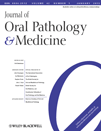EGFR status and EGFR ligand expression influence the treatment response of head and neck cancer cell lines
Abstract
Background: Combination treatment (chemoradiotherapy) is the standard treatment for locally advanced head and neck squamous cell carcinoma (HNSCC); however, treatment resistance and local recurrence are significant problems. A high level of epidermal growth factor receptor (EGFR) has been associated with a more aggressive phenotype as well as decreased responsiveness to radio- or chemotherapy. We examined the role of EGFR status and EGFR ligand expression for the treatment response.
Methods: Intrinsic sensitivity to radiotherapy, cisplatin, and cetuximab treatments was investigated in 25 HNSCC cell lines. EGFR gene copy number, mRNA and protein expression, EGFR and Akt phosphorylation status, and mRNA expression of the EGFR ligands were analyzed using quantitative PCR and ELISA and assessed for their impact on treatment sensitivity.
Results: Different treatment modalities yielded great diversity in outcome; of note, cetuximab treatment stimulated growth in one cell line. When treatments were combined primarily additive effects were observed. While radioresistance tended to be associated with a high level of phosphorylated EGFR (pEGFR; P = 0.09), cetuximab-resistant cells had low levels of pEGFR (P = 0.13). The three most cetuximab-sensitive cell lines had high EGFR gene copy numbers. Furthermore, cetuximab treatment response was significantly correlated with epiregulin mRNA expression (r = −0.408, P = 0.043). Cisplatin-resistant tumor cells expressed significantly lower levels of EGFR protein (P = 0.04) compared to cisplatin-sensitive cells and tended to have lower levels of phosphorylated Akt (pAkt; P = 0.13) and lower expression levels of amphiregulin (P = 0.18).
Conclusions: Epidermal growth factor receptor status and ligand expression influence the treatment sensitivity of HNSCC cells and may be useful as predictive markers.




